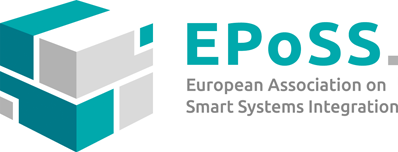The report is publicly available at the COWIN website (www.cowin4u.eu). However, registration is required before downloading the report.
The convergence of micro, nano and bio systems and the integration of smart systems in life sciences (including medical, environmental or food related applications) is a current trend aiming mainly at accelerating the development of highly integrated diagnostics, monitoring and therapeutics devices.
Nevertheless addressing a new market with its own specificities of players, scalability, clinical tests and regulation is not a trivial issue for the smart systems community.
COWIN intends to contribute to the emergence of the micro nano bio convergence by focusing on the commercial exploitation of innovative research results in this area and by supporting researchers and companies notably with giving them key information on the markets trends and needs.
The report on main challenges and barriers to bring smart systems to the diagnostics and food markets contains added-value information for academic and industrial stakeholders willing to better understand the trends and needs of this very fragmented field. Highlighted are also common beliefs and the tangible benefits that smart systems offer to different diagnostics markets. Furthermore, this report provides examples of specifications to better address the food and water quality area, in order to improve smart systems’ penetration in this emerging and growing market. Finally, a solution to consider regulatory constraints as a driver and not just as a barrier is proposed.
The report is an useful guideline to drive R&D projects and to build a concrete business plan to ensure that technologies and smart systems solutions developed will fit a real market need.
-> You need to be registered to download the report. Please click >>here to register.
-> To download the report, click >>here
Content of the report:
I. Global overview of the Diagnostic market
A/ The in-vitro medical diagnostic market
- Facts and figures
- Main drivers for innovation
B/ The food and environment diagnostic market
- Facts and figures
- Main drivers for innovation
II. Miniaturized smart systems market for diagnostic applications
A/ Smart Miniaturized Systems and forecasted markets
- Definition
- Forecasted markets
- Added-value of miniaturized smart systems
B / Use and expectations for miniaturized smart systems in vitro and industrial diagnostic
- Miniaturized smart systems and POC opportunities
- Focus on in vitro diagnostic applications
- Focus on industrial diagnostic applications
III. Main challenges to bring miniaturized smart systems to market
A/ Main technical challenges
- To define the key specifications to address
- To find the good combination of specifications to develop and promote
- To bring a key differentiation compare to what already exists
- To limit the technological risk perceived
B/ Main economic challenges
- Cost pressure
- Innovation adoption by the healthcare funding systems
- Compatibility with data management
- To develop a solution economically efficient
C/ Main challenges related to regulation
- Regulation and in vitro diagnostic
- Regulation and industrial diagnostic
D/ Find the right positioning in the supply chain and relevant business model
IV. Build good business cases to optimize commercialization process
A/ What is a business case
B/ The business case’s added-value
- A guideline to support the technical choice all along R&D work
- A guideline to optimize the R&D investment risks
- Contribute to identify the good partners
C/ How to work on business case
- Be open-minded
- Information is key
V. How to set-up Good Collaborations
A/ Demonstrate the added-value of your technology
B/ Demonstrate that there is no more technical risk
C/ Prepare compliance with regulation
Share on
